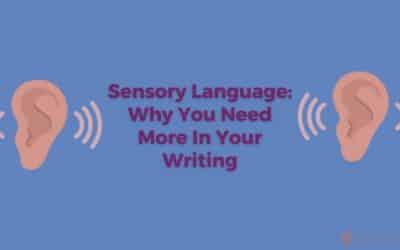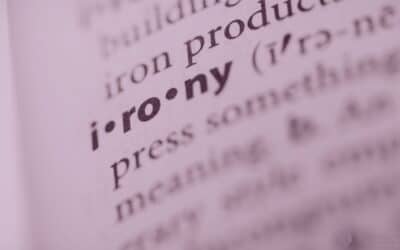Have you ever thought about your writing tone? The tone you choose matters because it evokes a strong emotional response in readers. For example, positive tone words have an uplifting effect, while negative tone words create tension or reveal an unhappy attitude.
Other tones include friendly, assertive, encouraging, optimistic, and surprised.
Understanding how to use tones is an important skill for any type of writer. While it seems mysterious, once you understand how to use it in your writing you’ll see just how powerful it can be in enhancing your words to reveal your thoughts and feelings on a subject.
Keep reading for an exploration of how to use negative tone words in the most effective way to enhance your work.
Table of Contents
What are Negative Tone Words?
Negative tone words includes anything that communicates a negative or pessimistic meaning.
If you want your reader to understand intuitively that something is wrong, choose descriptive words with a negative tone to help accomplish this.
46 Negative Tone Words Examples*
- Absurd (Ridiculous or laughable)
- Accusatory (Suggesting someone has done wrong)
- Acerbic (Hurtful, severe, biting)
- Aggressive (Hostile and argumentative)
- Antagonistic (Contrarian or belligerent)
- Apathetic (Lacking concern)
- Arrogant (Conceited, condescending)
- Belligerent (Combative, war-like)
- Brisk (Quick and active)
- Brusque (Abrupt, dismissive, blunt)
- Callous (Uncaring, indifferent)
- Choleric (Easily angered)
- Complicated (Difficult to understand, complex)
- Condemnatory (Expressing strong disapproval)
- Contemptuous (Showing scorn or disdain)
- Cruel (Mean or unkind)
- Depressed (Not having buoyancy, emotionally blunted, apathetic)
- Derisive (Mocking, dismissive, snide)
- Diabolic (Demonic, malicious, evil)
- Disbelieving (Not believing, mistrustful)
- Disparaging (Critical, scornful, insulting)
- Egotistical (Self-centered, arrogant)
- Evasive (Avoiding, cryptic, unclear)
- Facetious (Flippant, dismissive, shallow)
- Fatalistic (Highly pessimistic)
- Ghoulish (Delighting in something evil, revolting)
- Histrionic (Extremely dramatic)
- Hollow (Empty, meaningless)
- Insolent (Very rude or disrespectful)
- Malicious (Desiring to hurt others)
- Melancholic (Regularly feeling or causing sadness)
- Mocking (Ridiculing, making fun of)
- Morose (Sullen, ill-tempered)
- Mournful (Full of grief or sadness)
- Nervous (Excitable, uneasy, apprehensive)
- Obsequious (Overly obedient, fawning, groveling)
- Ominous (Foreboding, threatening)
- Outraged (Extremely angry, indignant)
- Pathetic (Bringing feelings of pity)
- Patronizing (Treating someone in a condescending way)
- Pretentious (Assuming one’s own importance or dignity)
- Pompous (Over-the-top display of one’s importance)
- Sardonic (Mocking, cynical, sneering)
- Scornful (Expressing a large amount of contempt)
- Tragic (Extremely sad or pathetic)
- Wrathful (Full of anger)
*Source: Become a Writer Today
When Should Negative Tone Words Be Used?
No matter what you’re writing, be aware of your tone. The words you choose send unconscious messages to your reader’s brains and if you use words that send a message you don’t intend, it can result in misunderstanding or confusion.
Here are four examples of when to utilize negative tone words in your writing.
To Evoke a Sense of Empathy
Tone can be and is often used to elicit a strong emotional response from readers, especially when describing justice, hardship, or frustration.
Negative tone words can be weaved into prose in order for a particular situation or feeling to stand out in the reader’s mind. When used properly, the reader has an opportunity to reflect and analyze the message in a deeper way.
Science helps us understand how our brains process emotions. The amygdala is responsible for processing fearful or threatening stimuli. Essentially, it detects threats unconsciously and helps us regulate our response—through feelings, behaviors, and physical reactions.
When we read words on a page, our brain processes its meaning and prompts us to feel certain emotions. Our brains are pretty cool!
To Create a Contrast and Emphasize Positives
One of the best times to use negative tone words is when you want to put more emphasis on the positives.
Let’s use an example from fiction writing to help make this usage clear. In order to emphasize a characters courageous or heroic attempt to save the world, you may decide to describe the antagonist’s plan as catastrophic, insincere or disastrous.
By juxtaposing positive and negative tone words, you can effectively position the importance of the more positive action in your reader’s mind.
To Portray Realism and Authenticity
Believe it or not, negative words can be utilized to create a genuine connection between a reader and a writer.
Using a mixture of tones can bring a sense of reality to your writing, and utilizing negative tones allows readers to experience a spectrum of emotions, which mirror everyday life.
If you only convey positive tones, it can come across as insincere or shallow. Including more complex tones allows you to build tension in your reader and allows you to create a satisfying conclusion through resolving that tension.
To Enhance Descriptive Language
One of the biggest benefits of using negative tone words is the ability to elevate your prose and increase its effectiveness. Choosing the right tone word for the situation paints an evocative picture in your reader’s mind and is a powerful tool for setting an intense atmosphere.
For example, instead of using neutral tone words such as upset, you can enhance this description by using disturbed or grieved. This is an easy way to instantly add more depth to your writing.
How to Use Negative Tones Words in Your Writing
So, how exactly should you use negative tone words in your work?
When your reader to internalize a pessimistic view of a scene or situation, implement strong negative tone words. Think about the emotions you want your reader to feel, and at which point this tension should climax. This will help you balance your tones and bring your readers along for an emotional journey without overdoing it.
If you’re looking for ways for your writing to be more authentic, then you may be missing this important tone! We hope this guide has helped you better understand when it’s appropriate to use negative tone words so you can create a stronger connection with your readers!












